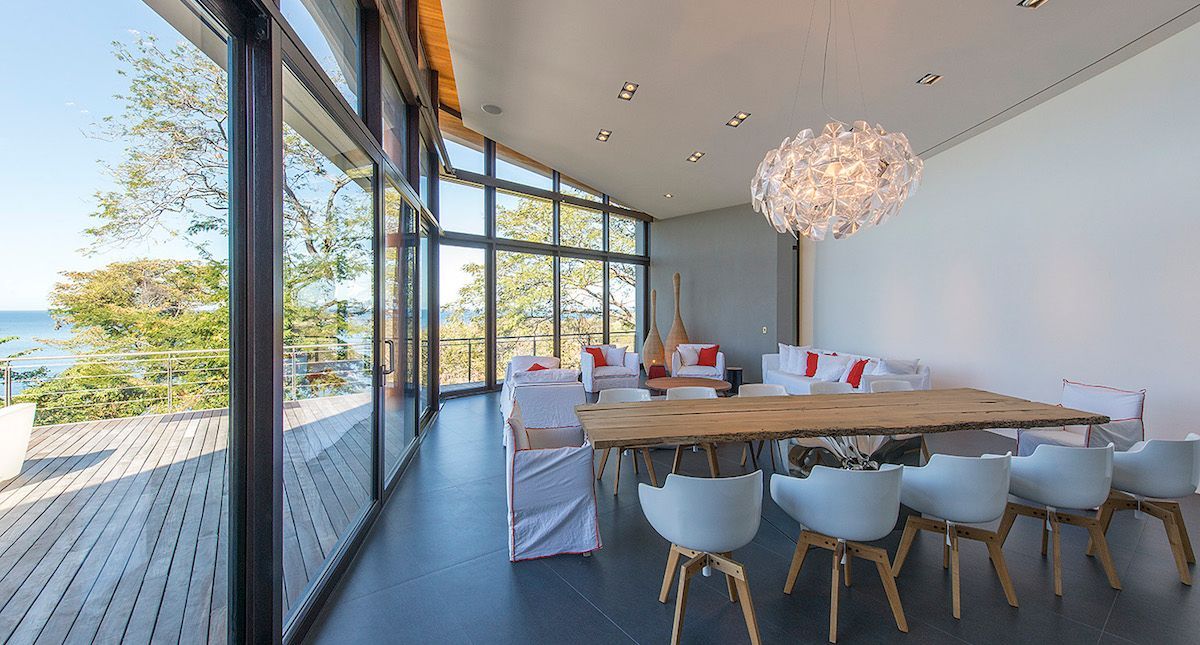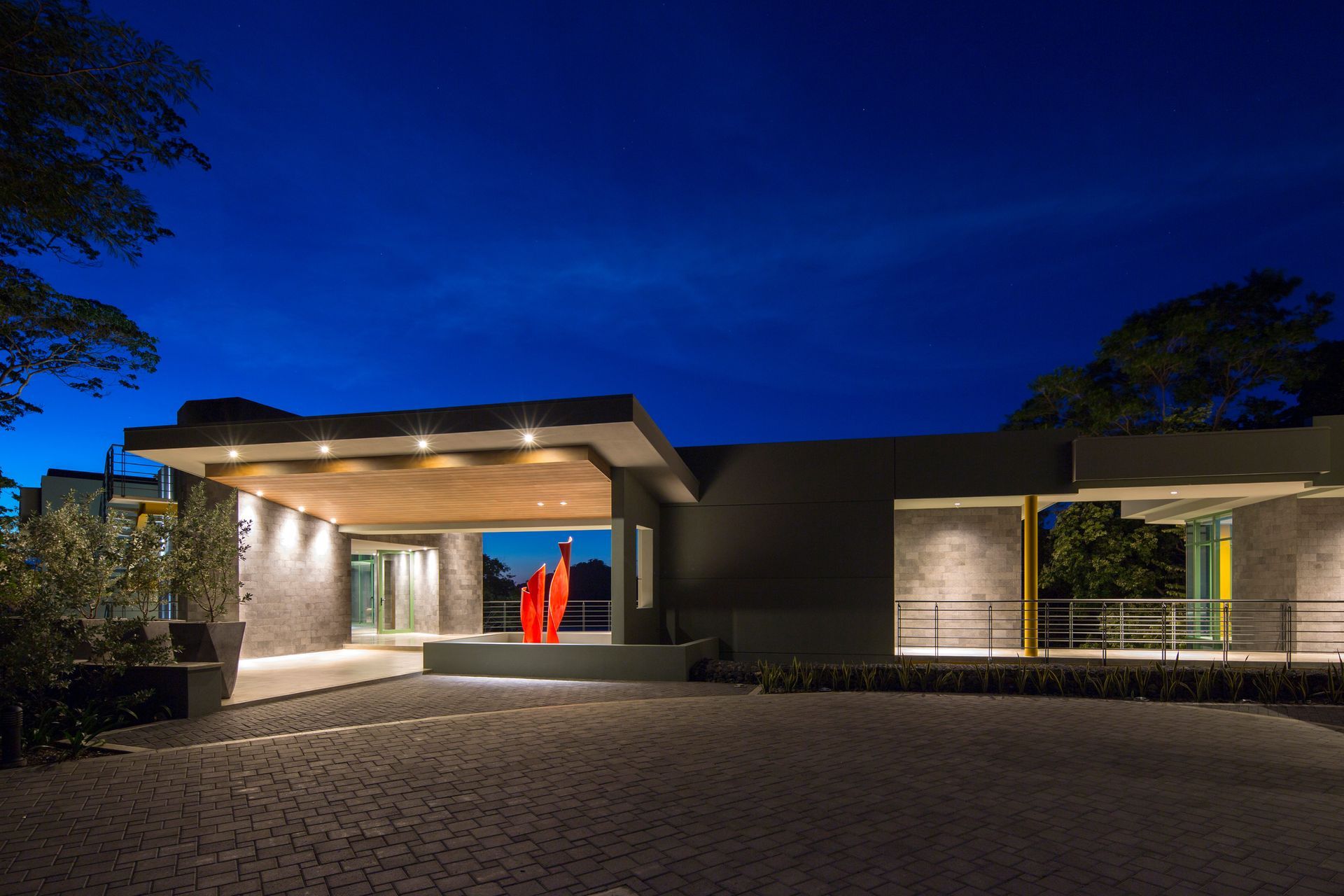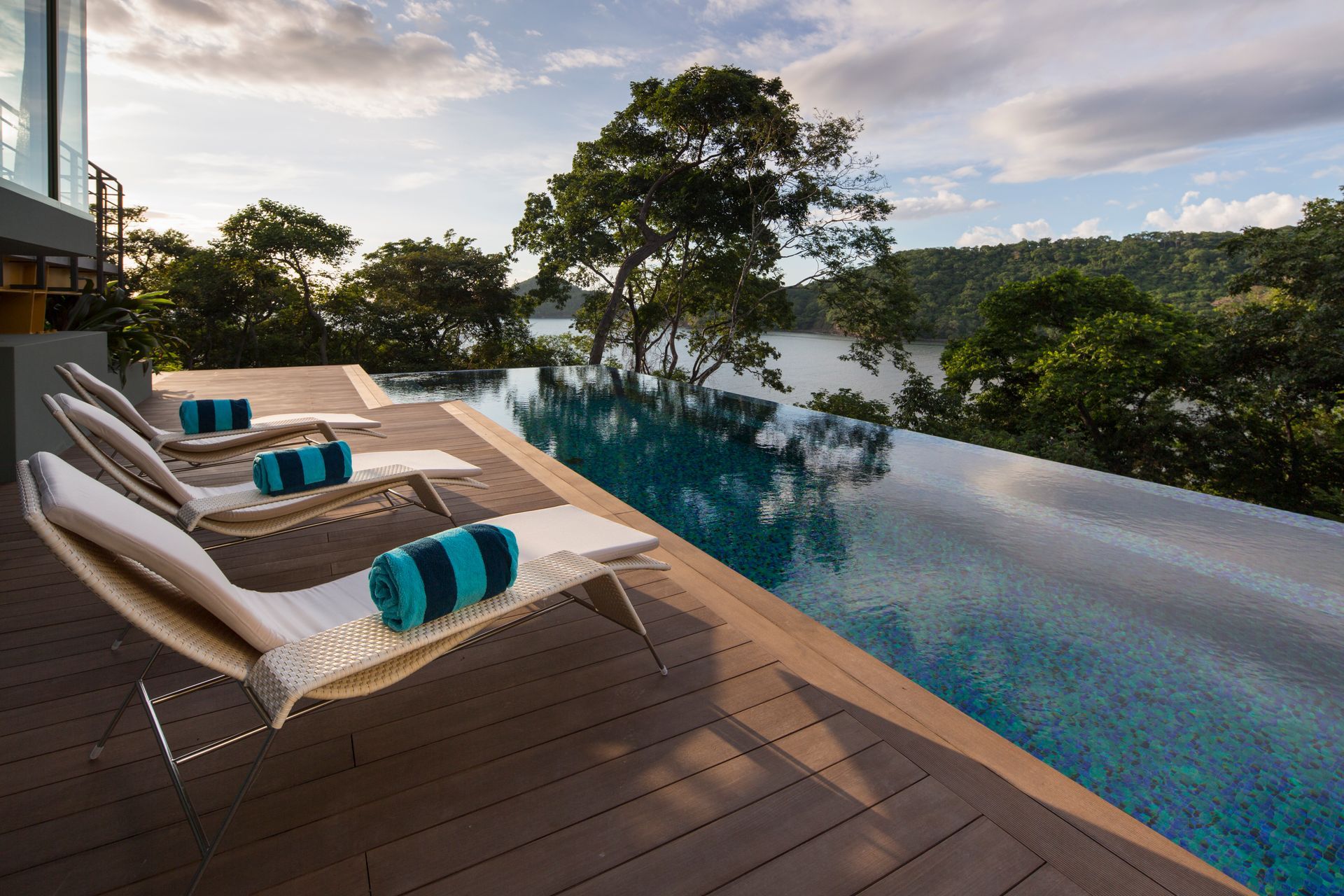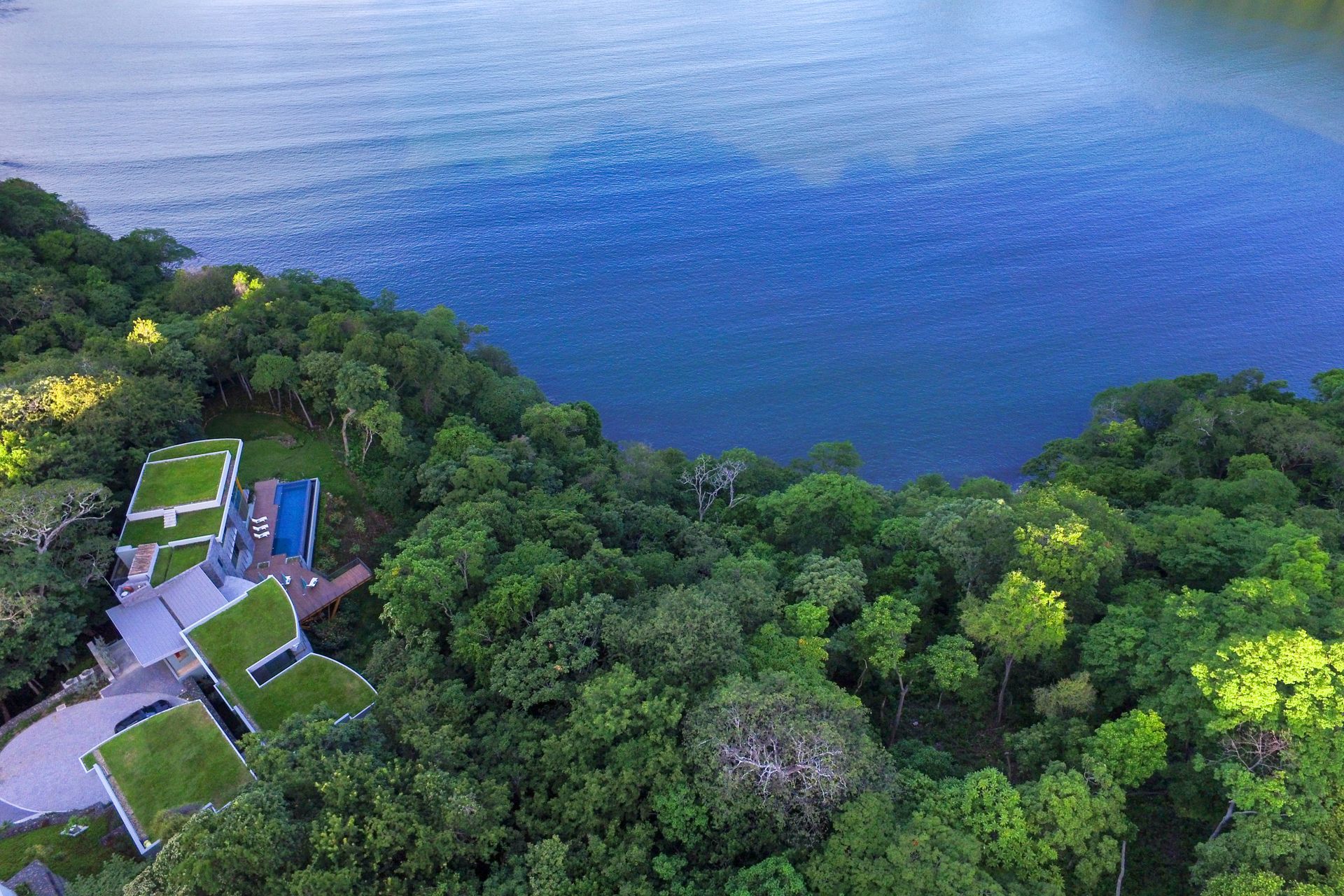Sustainable design strategies in home cooling
Okay, so you’re considering to have a house in Costa Rica. You may be one of a group of people who visit Costa Rica regularly, have been coming regularly on vacation for several years and are ready to take the next step. Or maybe you have recently come to visit and fell in love with the lush jungles, amazing ocean views and warm climate and decided that it is worth it for you to invest in a vacation home in Costa Rica. For the purposes of this article I will make the assumption that you have chosen an oceanview location and you have hot climate to contend with. Sustainable design should be one of your main considerations for an effective design.
Deciding on your strategy for cooling your home is a technical matter but one that is important to decide early on, since it will determine how other elements and strategies in the home are addressed.
Opposite Cooling Strategies
There are two main strategies for cooling your home in a tropical climate, and they are diametrically opposite in nature. It is important to understand the core philosophy of each strategy so you can decide which one goes with your lifestyle and personal tastes. Typically, a design that is truly committed to one strategy or the other, can’t really be successfully converted into the other.
The first strategy is passive cooling. Out of both strategies, this is the one that can be considered truly environmentally responsible and belonging to sustainable design. Passive cooling involves using techniques that involve design that works with the natural physics and behaviour of cool vs. heated air. Homes with passive cooling use extensive open areas to allow for cross-breezes through the spaces and use openings in high areas to allow heated air to rise and escape. The goal of passive cooling is to use natural behaviour of air to enhance ventilation and reduce interior temperatures in built spaces.
The second strategy is mechanical cooling. Mechanical cooling uses equipment (air conditioning) to achieve cooling of interior spaces. Evidently, mechanical cooling is able to achieve thermal comfort by much higher reduction in temperatures that are not possible by passive cooling means. Even though there is energy being spent, whereas passive cooling uses no energy, this doesn’t mean that mechanical cooling is not environmentally responsible, but I will expand on that later in this article.
Sustainable Design – Passive Cooling Only
There are multiple elements and methods that conform a Passive Cooling Strategy for your home. These can vary from extension of overhangs to control solar gain, orientation of the structure, reduction in window openings to a certain side, creation of wind catchers, enhancing cross-ventilation, allowing heated air to escape upward, etc., just to name a few. I do not intent to turn this article into a lesson in passive cooling, since it would become simply too extensive and technical.
What you need to know is that passive cooling is typically achieved by the use of a multitude of strategies. Each specific strategy may only provide marginal improvement, but put together, they will add up to a means of reducing heat inside a structure and improving human comfort. The concept of passive cooling requires that the means or strategies used do not require energy.
One of the main features of a passive-cooled home is to capture of natural breezes and channel them through the interior spaces of the home and out through openings on an opposite side of the home. This means that the home needs openings on both ends to remain open to allow the formation of the desired cross-breeze. This means you will depend heavily on mosquito screens to keep out bugs and critters.
Another element to consider is that in a passive-cooled only home one essential element is the means to allow hot air to escape at the top of structures, where heated air collects. These locations will probably not be practical to open and close. Very likely these openings will also depend on mosquito screens.
There are theoretical temperatures and humidity ranges that are considered as acceptable “human comfort”, but in reality comfort is a subjective thing. This is why some of us may put the A/C in our car at a lower temperature than others, and some may prefer no A/C and to roll down the windows. A passive-cooled only home in very hot climates may not be sufficient to fully bring extreme temperatures down to human comfort levels.
Mechanical Cooling

While strict sustainable design ideals calls for not using mechanical equipment, we realize that for certain locations or project types this may not be doable. A home with mechanical cooling is one that requires a certain piece of equipment that uses energy to provide cooling of interior spaces. In plain english, mechanical cooling can be either the use of fans, or the use of air conditioning. Typically owners prefer the second alternative, or often both fans and air conditioning.
Mechanical cooling, when properly designed by a capable HVAC engineer is capable of bringing extreme exterior temperatures down to standard comfort level or even lower. It is important to note that when an engineer designs a residential A/C system, the goal temperature for the system is 24º Celsius, which is considered the standard comfort temperature. If you wish to have the system designed for a lower temperature than the standard 24º Celsius, then you need to specify this to the designer to begin with.
Leaving the use of fans aside, let’s concentrate on the use of air conditioning. There are many types and many brands of air conditioning systems available. Systems can range from your bread-and-butter cheap wall-mounted split, to properly designed central systems with ducts for air distribution. The latter system can range from simple direct-expansion split systems, to water-chilled units, to highly efficient VRF (Variable Ratio Flow) systems. The differences between system types will come down to energy efficiency, and this is where one system can be considered environmentally friendly and another not. Highly efficient systems can achieve the desired cooling with the minimal possible amount of energy expended.
Sustainable Design – designing an efficient building envelope
When using mechanical cooling, the other elements in the building become relevant in order to achieve an acceptable efficiency. Your exterior windows and doors are essential. Having exterior windows and doors that do not seal properly is the single biggest culprit of high energy waste. If you have sliding doors that have open gaps all around, then you are constantly bleeding energy whenever you have your system turned on, and this can become quite considerable. Imagine that you are driving around with a tire that was a slow puncture in your car, and you constantly need to stop and refill air simply to be able to keep on running. Doors with open gaps are exactly the same.
High-end and airtight window systems are essential to achieve good energy performance
Your exterior windows and doors not only need to be sealed tightly but also need to be with high levels of insulation. Solar control glass types, such as Low-E glass is essential to keep solar heat gain under control and reduce the cooling load for the home. Ideally, glass for exterior windows should be double-pane, thermally-insulated glass that can incorporate Low-E glass. There are a multitude of choices on glass types in the market, so you should do your homework and figure out a cost-benefit analysis to maximize your investment.
Exterior walls and the roof are essential to have good insulation levels, which will also help to achieve a reduction in solar heat gain. Your focus should always be to keep the sun out of your interior spaces, therefore if the sun is outside, you have been successful in reducing the solar heat gain. Lower solar heat gain means lower cooling load, which translates into smaller equipment, with lower initial cost and lower running costs.
The architect is the leader in reducing energy expenses
The architectural design plays a huge role in using sustainable design techniques to effectively lower solar heat gain. Sometimes small variations in the architectural design play an even bigger role (at maybe lower cost) than choosing very high-end windows and doors, for example. Things like extensive overhangs, precise solar orientation of the structure and building mass, proper design and location of window surfaces can provide huge gains in the building’s energy efficiency.
High-end design technology is key so that architects can provide these changes in a measurable and systematic manner and truly offer responsible sustainable design . Today, the use of BIM (Building Information Modeling) technology allows architects the tools needed to be able to optimise and fine-tune a building’s design to reduce its environmental footprint and improve interior comfort.
Energy-efficient design is better with software tools that can consider the different materials and “skins” of your building envelope and their corresponding insulation qualities.
At SARCO Architects Costa Rica we use the most advanced BIM tools exclusively in all our projects. In our design process we deeply analyze the site conditions and use the technology at our disposal to perform energy analysis of our projects. We can truly offer our clients sustainable design solutions, knowing that we have adjusted and optimized our projects architectural elements to reduce the impact of solar gain and increase the project’s energy efficiency.
Combination of Mechanical and Passive Cooling for Sustainable Design
Usually, the optimal results are achieved by a combination of mechanical cooling with the use of selected passive cooling techniques, all properly optimised by an architect capable of using leading-edge technology in their design. Highly efficient air conditioning systems are improved by the use of solar control devices and proper architectural optimisation.
Focusing on keeping the sun out of the interior spaces is an essential sustainable design strategy for reduction of energy expense.
A Note on Proper use of Air Conditioning Systems
Many people often are not informed about the proper use of your air conditioning. As I mentioned earlier, the standard design temperature is 24º Celsius (75º Fahrenheit). A well-designed and sized air conditioning system should be set to operate at this temperature (this should be your selected temperature in your thermostat). The fact of the matter is that the majority of users don’t know this and they select thermostat temperatures much lower, even as low as the thermostat may allow.
Setting thermostat temperatures much lower than the design temperature will make your system spend huge amounts of energy. This over-stress of the system (by improper user settings) will also result in freezing of interior components of your air handler. When this happens, your system no longer works properly and will be unable to cool your home! Always set your thermostat to no lower than 24º Celsius or 75º Fahrenheit. If you do not feel comfortable by using your system at that setting then your system is undersized.
If your personal tastes call for lower temperatures than 75º Fahrenheit, it is your responsibility to tell your designer that you have specific requirements for your home cooling. And you need to be prepared for higher energy bills because of this.
We encourage owners to embrace sustainable design advantages in order to build the most environmentally responsible and energy efficient homes.
This article was published in the Costa Rica News
Roderick Anderson is CEO & Design Director of SARCO Architects, a Costa Rican architectural firm that works exclusively with international clients to design modern, sustainable luxury vacation homes. Winner of several design awards by the International Property Awards, recognized as leader in application of architectural technology and speaker at international conferences on Building Information Modeling (BIM) t hrough Latin America.
The post Sustainable design strategies in home cooling appeared first on SARCO Architects Costa Rica - Luxury Design for International Clients.






